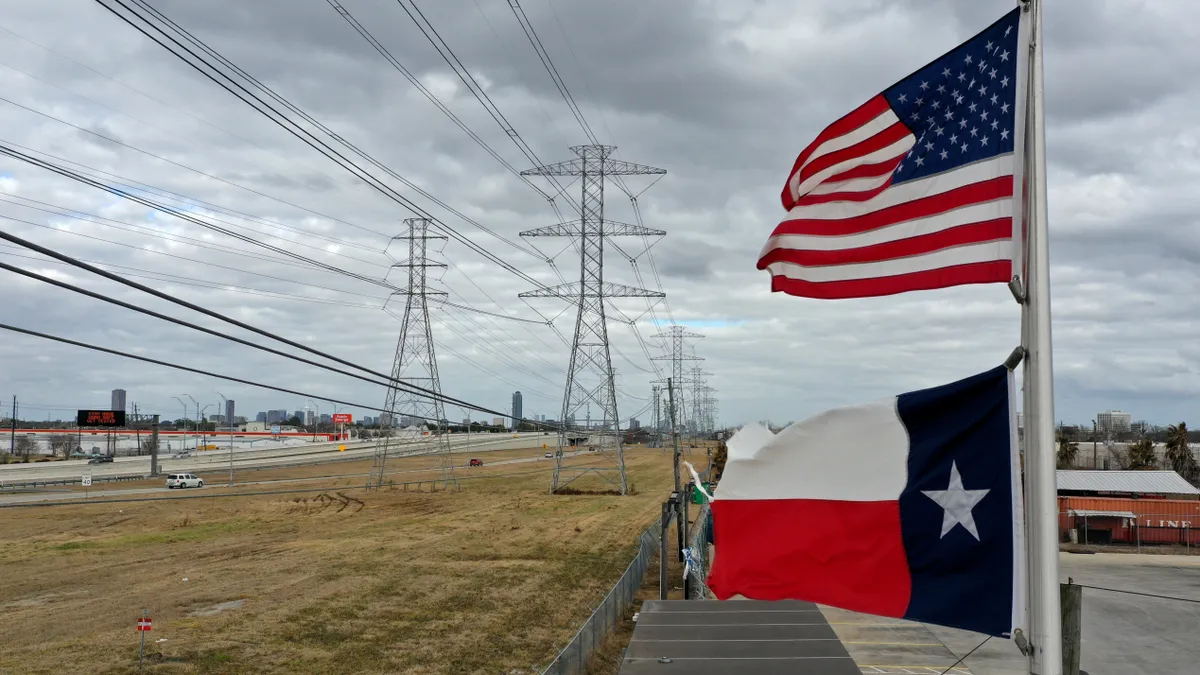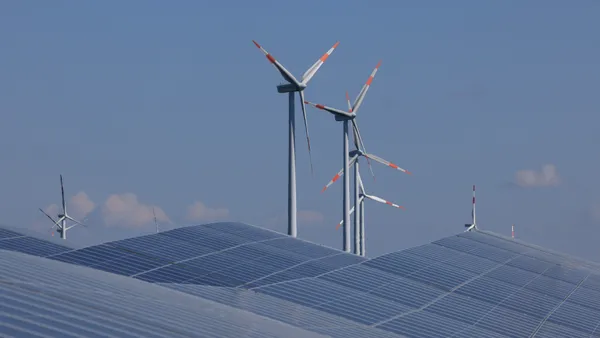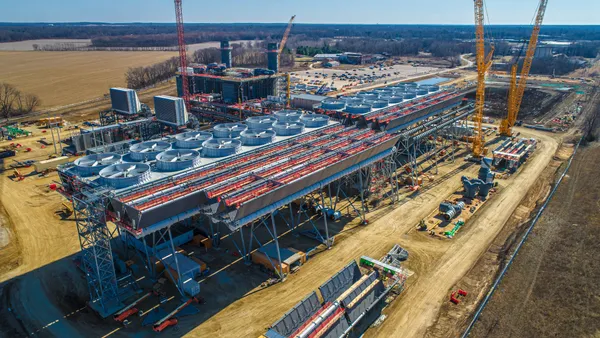Dive Brief:
- Construction of a new 765-kV transmission "backbone" in Texas will cost only 4% more than expanding the existing 345-kV system to enable anticipated load growth, according to a January analysis by the Electric Reliability Council of Texas. The higher voltage system would lower congestion costs and energy losses, boost transfer capabilities and improve electric reliability, the grid operator found.
- Development of the higher-voltage system is being considered as part of a plan to support the Permian Basin region, where the oil and gas industry, data centers and other sources of load growth are expected to push demand to about 26 GW by 2038.
- Investment in 765-kV infrastructure has also been proposed in the Southwest Power Pool and Midcontinent Independent System Operator territories, according to Kristi Hobbs, ERCOT’s vice president of system planning and weatherization. “One could say it's going to be a transmission race between the regions,” she said.
Dive Insight:
The choice to upgrade Texas’ transmission system is “a pivotal and important decision,” Hobbs said Friday at the Public Utility Commission of Texas open meeting. But whether the state upgrades to 765-kV lines or not, billions in transmission spending will be required.
ERCOT has been using 345-kV lines since the 1960s.
“No matter which voltage plan you consider going forward ... it's going to require an investment in the future of Texas to build the transmission to meet consumers’ needs reliably,” Hobbs said.
Both the 345-kV and 765-kV plans are estimated to require approximately $5 billion per year of transmission project investment over a six-year planning horizon, according to ERCOT’s analysis. By comparison, in the past three years ERCOT has seen transmission providers spend about $3 billion annually on projects and almost $4 billion in projects were endorsed by the ERCOT board in 2024, Hobbs said.
Commissioners asked about potential supply chain issues, and whether transmission project developers would be able to obtain all of the necessary materials.
“The vendors are definitely ramping up production,” Hobbs said, pointing to similar discussions in MISO and SPP.
“One could say it's going to be a transmission race between the regions. That's one good benefit of Texas. We make a decision now, we can be ahead of that race,” she said. “I've also been told by several transmission service providers ... they're preparing for either 345 or 765, and they have begun those processes so that they're ready to go when a decision is made.”
Commission staff is preparing to hold a March workshop to discuss the transmission expansion, and ERCOT officials said supply chain issues would be on the agenda.
Commissioner Courtney Hjaltman asked about the potential for transmission costs to drive up power bills, pointing to the state’s Competitive Renewable Energy Zones program, which brought wind generation online across the state. “CREZ is still something people think about, and that costs grew as the project went on. How does that not become what we have here?”
Many people do have concerns about how CREZ impacted bills, Hobbs replied, but the current situation is different because Texas is preparing for significant load growth. CREZ was authorized by state lawmakers in 2005 and projects were completed about a decade later.
“There's going to be more customers on the system. There's going to be large users of energy on the system. So there's going to be more businesses, more consumers to spread those costs across. So you shouldn't see that same type of impact to the consumer’s bill,” Hobbs said.
The PUCT will likely make a decision between the 765-kV or 345-kV transmission build-outs in April, Chairman Thomas Gleeson said. Discussion is expected at the April 3 open meeting, and a vote at the April 24 meeting.















